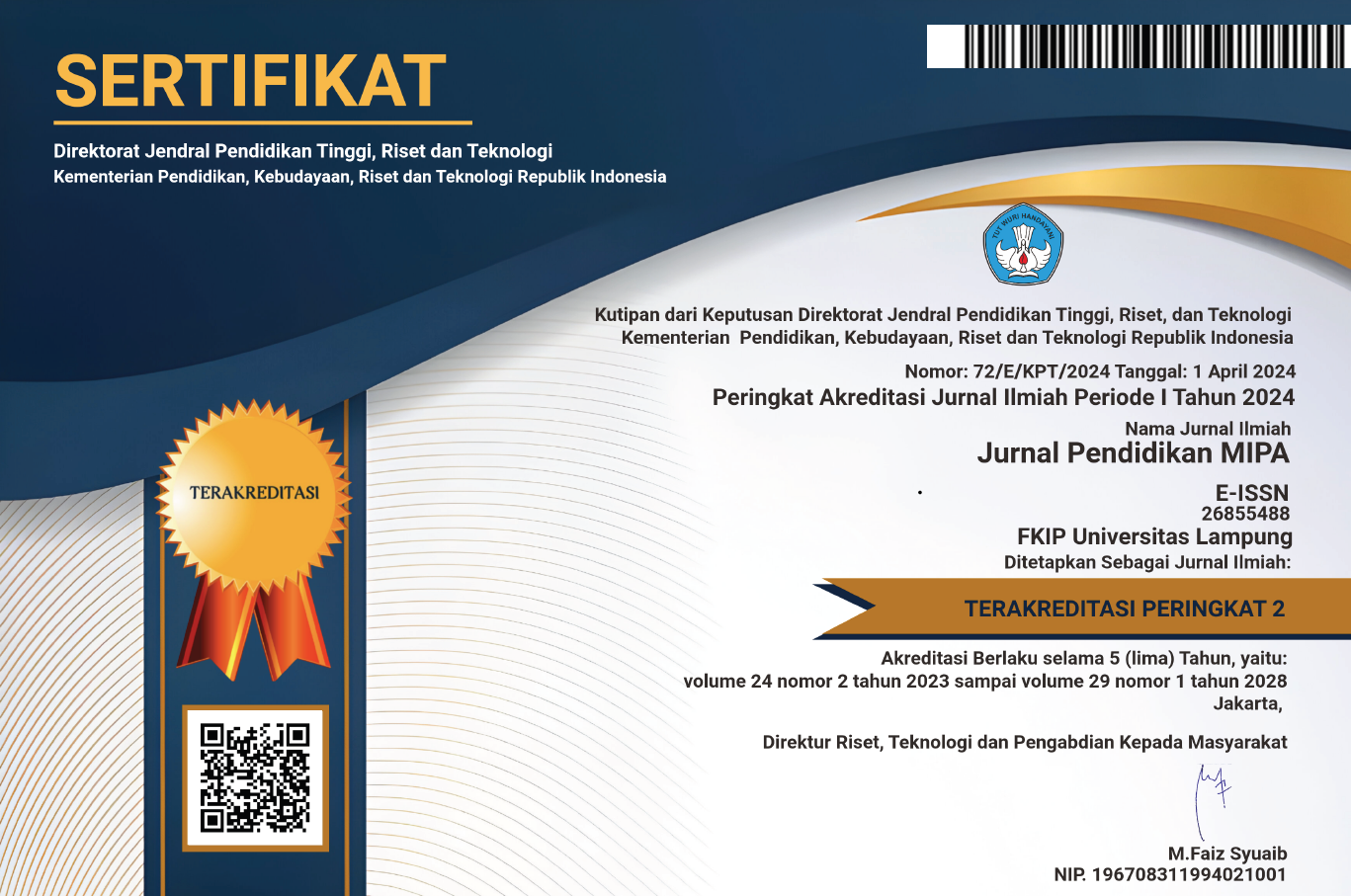Habits of Mind and Concept Mastery of Cell in Multimedia Virtual Class Environment: A Case of Biology Students in Lampung University
 Country:
Country:
(1) University of Lampung, Indonesia
(2) University of Lampung, Indonesia
(3) University of Lampung, Indonesia
The ability of students to use Information and Communication Technology (ICT) is still not optimally integrated with learning. Even though most students already have gadgets, internet connections are available via campus hotspots. Based on this, learning in higher education cannot be separated from the use of computerized and online-based technology. The integration of ICT into vclass-based multimedia learning is a potential thing to develop. This vclass-based multimedia application is expected to improve habits of mind and conceptual understanding of biology cell of students. Improved learning outcomes can be demonstrated through conceptual understanding which are the ability to understand the concepts that exist in the learning material after the learning process takes place.
Keywords: habits of mind, mastery of concepts, cells, virtual class.
Anderson, L.W & Krathwohl, D.R. (2010). Kerangka Landasan untuk Pembelajaran, Pengajaran, dan Asesmen. Yogyakarta: Pustaka Pelajar.
Campbell, N.A, Reece, J.B. & Mitchell, L.G. (2006). Biologi. Jakarta: Erlangga.
Chaeruman, U. A. (2005). Mengintergrasikan Teknologi Informasi dan Komunikasi (TIK) ke dalam Proses Pembelajaran; Apa, Mengapa dan Bagaimana? Jurnal Teknodik. 16: 26-32.
Costa, A.L. & Kallick, B. 2000. Describing 16 Habits of Mind. Habits of Mind: A Development Series. Alexandria, VA. Retrieved from http://www.csnh.edu/documents/CCSNHMLC_habits_of_Mind_Costa_Kallick
Dahar, R.W. (2010). Teori-Teori Belajar. Jakarta: Erlangga.
Direktorat Jendral Pendidikan Tinggi. (2010). Kajian Model Konseptual Materi e-Pembelajaran. Jakarta: Dikti.
Ferriman. (2013). The Impact of Blended e-Learning on Undergraduate Academic essay writing in English (L2). Computers and Education. 60(1): 243-253.
Kumar dan Shahi. (2014). Virtual Classroom System. International Journal of Engineering Trends and Technology, 35(7): 30-36.
Marzano, R.J., Peckering, D.J. & McThige, J. (1993). Assessing student outcomes: Performance assessment using the dimensions of learning model. Alexandria, VA: Association for Supervision and Curriculum Development.
Miarso, Y. (2009). Menyemai Benih Teknologi Pendidikan. Jakarta: Kencana Prenada Media Group.
Risnosanti. (2011). Peran Habits Of Mind Dalam Mengembangkan Kemampuan Berpikir Matematis Tingkat Tinggi. Prosiding Seminar Nasional Pendidikan MIPA PMIPA FKIP Universitas Lampung. Bandar Lampung.
Rustaman. (2003). Strategi Belajar Mengajar Biologi. Common Textbook FPMIPA UPI. Tidak diterbitkan.
Rustaman, N.Y. (2008). Kebiasaan Berpikir dalam Pembelajaran Sains dan Asesmennya. Retrieved from http://file.upi.edu/direktori/fpmipa/jur.pend.biologi/195012311979032/nuryani_rustaman/Habits_of_Mind_08_makalah.pdf
Rustaman, N.Y. (2010). Arah Pembelajaran Keanekaragaman Tumbuhan dan Asesmennya Di LPTK dan Sekolah. Common Textbook FPMIPA UPI: tidak diterbitkan.
Sagala, S. (2005). Konsep dan Makna Pembelajaran. Bandung: Alfabeta.
Sriyati, S. (2011). Peran Asesmen Formatif dalam Membentuk Habits of Mind Mahasiswa. Disertasi Doktor pada UPI Bandung: tidak diterbitkan.
Wahono, R. (2008). Definisi dan Komponen E-learning. Retrieved from http://romisatriawahono.net/2008/01/23
Winkel, W. (2004). Psikologi Pengajaran. Yogyakarta: Media Abadi.
Refbacks
- There are currently no refbacks.

This work is licensed under a Creative Commons Attribution-ShareAlike 4.0 International License.






